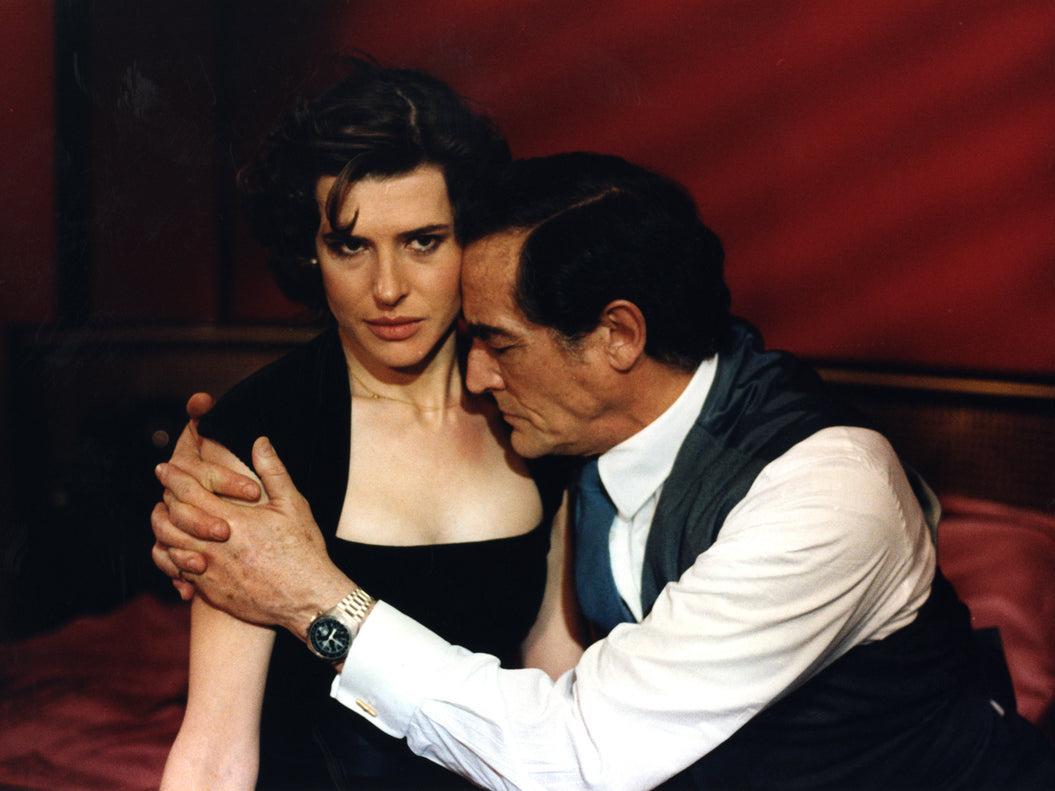
An author tells the background of one of her novels to a young filmmaker. The love story of the novel and the passion between the two artists interwine in a magic realistic style.
“Benvenuta is a film whose photography really struck me.”
Alain Resnais1
“Naar verluidt zou Jean Daskalidès in 1983 voor André Delvaux een van de mooiste huizen van de Coupure Rechts gekozen hebben – Woning Langerock op de hoek van de Iepensteeg – als decor voor diens film Benvenuta. De raamvertelling over een gedoemde passionele liefde is gebaseerd op het boek La confession anonyme. Het werd in 1960 anoniem gepubliceerd, later bleek de Gentse schrijfster Suzanne Lilar de auteur te zijn. Protagoniste in de film is Jeanne, een oudere schrijfster die een boek schreef over de tragische liefde tussen een Gentse pianiste, Benvenuta, en een Italiaanse magistraat, Livio. De filmmaker François wil het boek verfilmen en ondervraagt Jeanne over de autobiografische achtergronden van het verhaal. Fictie en realiteit vermengen zich. Jeannes huis op Coupure Rechts en de Gentse couleur locale spelen een opvallende rol in het verhaal.”
De Coupure in Gent: Scheiding en Verbinding2
“Delvaux creates images which are both violent and restrained for this lofty, double-sided submission to passion, successfully conveying the emotions aroused by this other dimension to love. Whilst Fanny Ardent is the very incarnation of all mental extremes, it is perhaps the muted tale carried by the voice of Françoise Fabian which is the more disturbing. For the actual interweaving of the stories, the constant overlapping of time and place, Delvaux displays a directorial style rich in formal invention.”
Jacqueline Aubenas3
“How to choose between the couples Anouk Aimée and Yves Montand (Un soir, un train), Anna Karina and Bulle Ogier (Rendez-vous à Bray), or Fanny Ardent and Vittorio Gassman (Benvenuta)? Benvenuta was shot in Ghent, which never looked better or more mysterious. Benvenuta speaks to the darker side of love and its images suggest a muted violence, with lots of frames within the frame, wonderful set designs (that red room!) and masterful editing that weaves a story within the story, conflating different times and places. Delvaux himself described Benvenuta as a ‘liturgy of sex’.”
Bart Versteirt4
- 1François Thomas, “Interview with Alain Resnais: on Mélo,” In: Lynn A. Higgins (ed.), Alain Resnais: Interviews (Jackson: University Press of Mississippi, 2021), 132. Originally published in Positif 307 (September 1986). Translated by T. Jefferson Kline. Delvaux's cinematographer, Charlie Van Damme, would go on to shoot Mélo (1986) for Alain Resnais.
- 2“Jean Daskalides (1922-1992): jazzmuzikant, technisch ingenieur, universiteitsassistent, gynaecoloog, filmregisseur en ook pralinemaker,” De Coupure in Gent: Scheiding en Verbinding (Gent: Academia Press, 2009), 194.”
- 3Jacqueline Aubenas, “Benvenuta,” In Marianne Thys (ed.), Belgian Cinema/Le Cinéma Belge/De Belgische Film (Gent: Ludion, 1999): 684.
- 4Emi Vergels, “Cinea’s Bart Versteirt selects 8 Belgian movies,” The Word Magazine, July 7, 2017.

